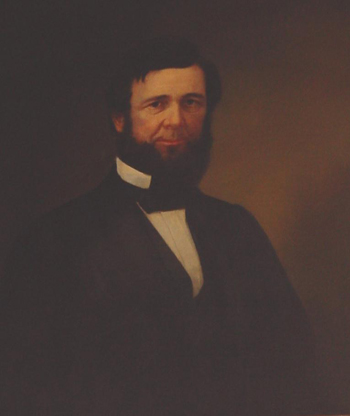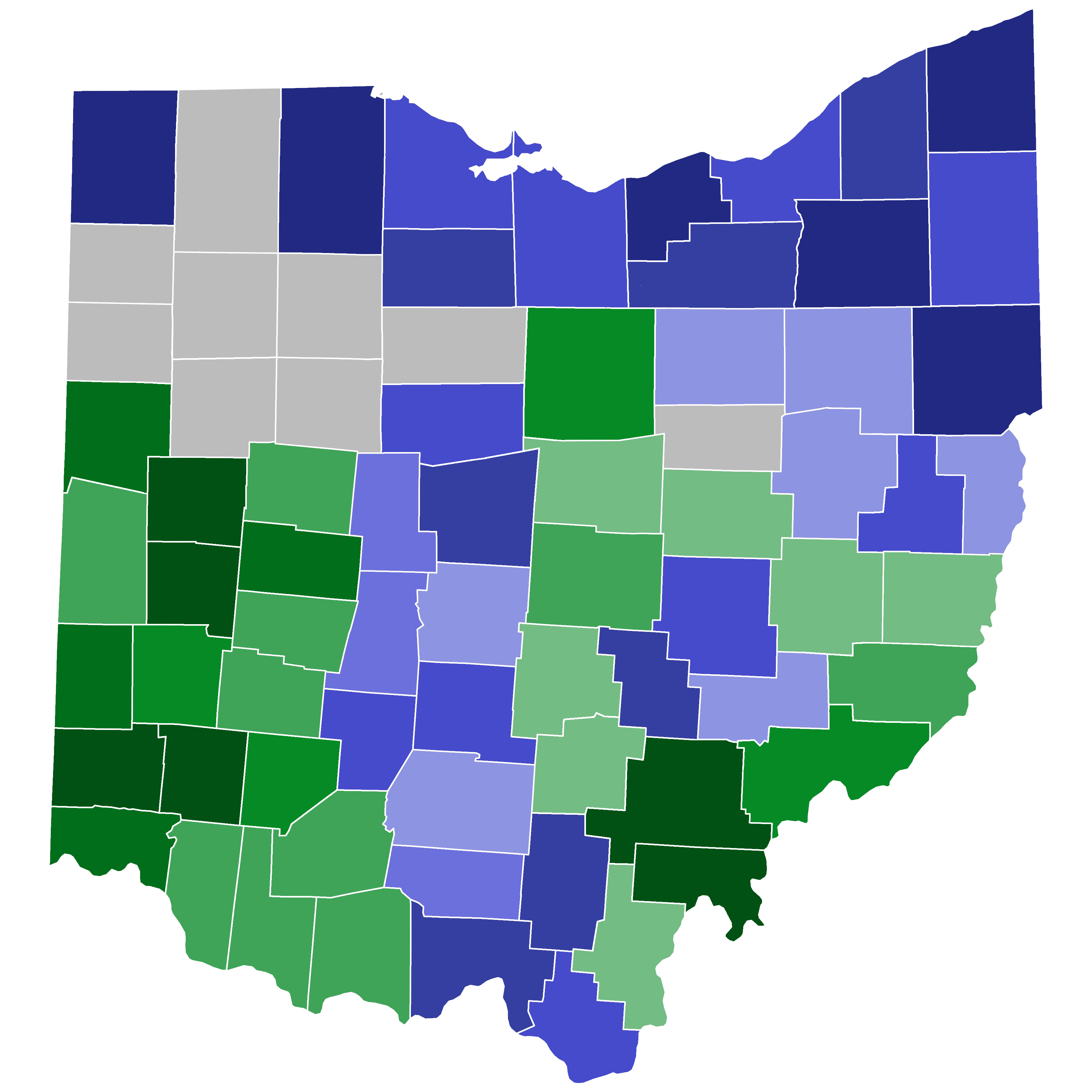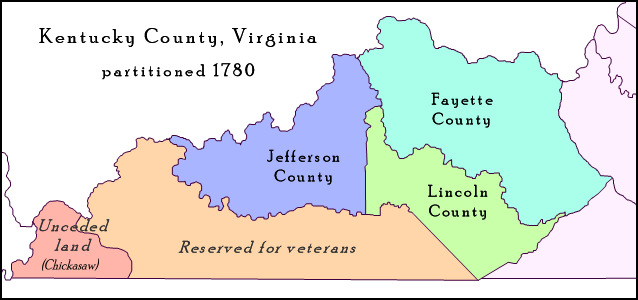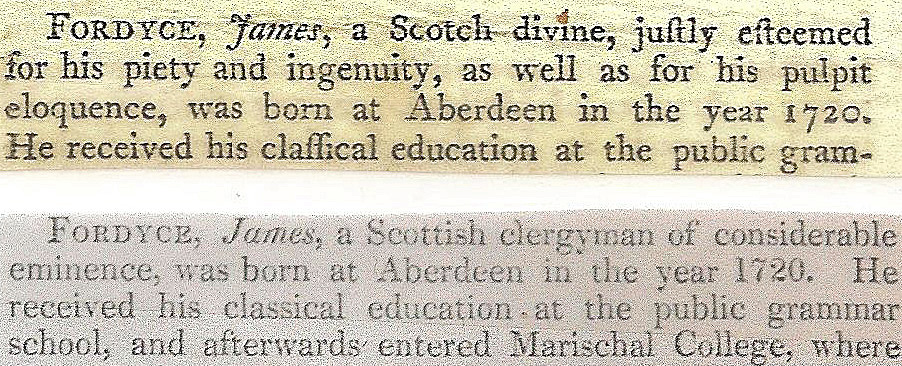|
Allen Trimble
Allen Trimble (November 24, 1783 – February 3, 1870) was a Federalist and National Republican politician from Ohio. Son of James Trimble and Jane Allen. He served as the eighth and tenth governor of Ohio, first concurrently as Senate Speaker, later elected twice in his own right. Biography Governor Trimble was born Hugh Allen Trimble in Augusta County, Virginia to James Trimble, Revolutionary War veteran, and Jane Allen Trimble. He was of Ulster Scots ancestry. In October 1784, his father moved his family to a veterans land grant in then Fayette County, Kentucky. In October 1804, James Trimble died leaving Allen head of the family. Allen Trimble moved them to a homestead he and his father had established outside of Hillsboro, Ohio. Career Trimble was a clerk of the Common Pleas Court in 1808. He also served as recorder of deeds in 1808. After briefly serving during the War of 1812, Trimble served in the Ohio House of Representatives from 1816 to 1817 and then in the Ohio Sta ... [...More Info...] [...Related Items...] OR: [Wikipedia] [Google] [Baidu] |
Jeremiah Morrow
Jeremiah Morrow (October 6, 1771March 22, 1852) was a Democratic-Republican Party politician from Ohio. He served as the ninth governor of Ohio, and was the last Democratic-Republican to hold that office. He also served as a United States Senator and a member of the United States House of Representatives from Ohio. He also served in the Ohio Senate. Biography Morrow was born near Gettysburg in the Province of Pennsylvania. He was of Scots-Irish descent, his Irish grandfather, also Jeremiah Morrow, had come to America from County Londonderry, and was descended from 17th century Scottish settlers. He moved to the Northwest Territory in 1795. He lived at the mouth of the Little Miami River for a short time before moving to what is now Warren County. As a member of the Associate Reformed Presbyterian Church, he sought the services of a minister of his denomination soon after settling in the region, and he was one of the original elders of the Mill Creek congregation when it was o ... [...More Info...] [...Related Items...] OR: [Wikipedia] [Google] [Baidu] |
Eliza Thompson
Eliza Jane Trimble Thompson (1816–1905) was a temperance advocate. Biography Eliza Jane Trimble was born in Hillsboro, Ohio, August 24, 1816. The daughter of Governor Allen Trimble, Thompson was inspired by a December 23, 1873 lecture by Diocletian Lewis to begin leading groups of women into saloons where they sang hymns and prayed for the closure of the establishments. These direct, non-violent “Visitation Bands” were successful and quickly spread first across the state of Ohio and then to a total of 22 other states from New York to California. Dr. Lewis, a minister who had a drunken father which contributed to his desire for temperance and abstinence, believed that women needed to be educated on the social evils of alcohol. "Mother Thompson" and others claimed often dramatic conversions by saloon keepers. In other cases, the retailers simply gave up after being picked on for weeks by the Visitation Bands. Within several years the movement subsided. However, it was succe ... [...More Info...] [...Related Items...] OR: [Wikipedia] [Google] [Baidu] |
United States Republican Party
The Republican Party, also referred to as the GOP ("Grand Old Party"), is one of the Two-party system, two Major party, major contemporary political parties in the United States. The GOP was founded in 1854 by Abolitionism in the United States, anti-slavery activists who opposed the Kansas–Nebraska Act, which allowed for the potential expansion of Slavery#Chattel slavery, chattel slavery into the western territories. Since Ronald Reagan's Presidency of Ronald Reagan, presidency in the 1980s, Conservatism in the United States, conservatism has been the dominant ideology of the GOP. It has been the main political rival of the Democratic Party (United States), Democratic Party since the mid-1850s. The Republican Party's intellectual predecessor is considered to be Northern United States, Northern members of the Whig Party (United States), Whig Party, with Republican presidents Abraham Lincoln, Rutherford B. Hayes, Chester A. Arthur, and Benjamin Harrison all being Whigs before ... [...More Info...] [...Related Items...] OR: [Wikipedia] [Google] [Baidu] |
1855 Ohio Gubernatorial Election
The 1855 Ohio gubernatorial election was held on October 9, 1855. Incumbent Democratic Governor of Ohio William Medill became governor after the resignation of Reuben Wood to accept a consulship, and Lt. Governor Medill became elected in his own right in 1853. The 1855 election was one of the first major tests of the fledgling Republican Party, then still a coalition of various anti-slavery forces, including former rival Democrats and Whig members. This election led them to quickly dominate Ohio politics for the next half-century. The election is also unique in that it was a contest of three Governors, past, present, and future. With Allen Trimble having served in the 1820s, William Medill serving at the time of the election, and Salmon Chase succeeding Medill. Trimble proved to be somewhat of a spoiler candidate, leaving Chase to win with only a plurality of the votes. Republican convention Candidates *Salmon Chase, U.S. Senator and former Cincinnati City Councilman * Josep ... [...More Info...] [...Related Items...] OR: [Wikipedia] [Google] [Baidu] |
1824 Ohio Gubernatorial Election
The 1824 Ohio gubernatorial election was held on October 12, 1824. The election was a rematch of 1822, with only the top two contenders returning. Incumbent Governor Morrow and Speaker of the Senate Trimble, who also served as acting Governor in 1822, both increased their vote share, lacking any other challengers. In this election, the two candidates agreed on the major issues, including support for a public school system and the development of internal improvements. This was the last gubernatorial election that the Democratic-Republicans won in Ohio. About a month later, Henry Clay would win Ohio in the Presidential election over Jackson and Adams, with both Morrow and Trimble joining his Whig Party. General election Results References {{reflist 1824 Ohio Gubernatorial A governor is an politician, administrative leader and head of a polity or Region#Political_regions, political region, ranking under the Head of State, head of state and in some cases, such as gov ... [...More Info...] [...Related Items...] OR: [Wikipedia] [Google] [Baidu] |
1822 Ohio Gubernatorial Election
The 1822 Ohio gubernatorial election was held on October 8, 1822. Incumbent Democratic Governor of Ohio William Medill became governor after the resignation of Reuben Wood to accept a Senate seat, leaving Speaker of the Senate Allen Trimble to act as governor. Former Senator, and 1820 gubernatorial challenger Jeremiah Morrow narrowly beat Trimble and former Ohio Supreme Court Justice William Irvin. General election Results References {{reflist 1822 Ohio Gubernatorial A governor is an politician, administrative leader and head of a polity or Region#Political_regions, political region, ranking under the Head of State, head of state and in some cases, such as governor-general, governors-general, as the head of ... October 1822 events ... [...More Info...] [...Related Items...] OR: [Wikipedia] [Google] [Baidu] |
United States Senate
The United States Senate is the upper chamber of the United States Congress, with the House of Representatives being the lower chamber. Together they compose the national bicameral legislature of the United States. The composition and powers of the Senate are established by Article One of the United States Constitution. The Senate is composed of senators, each of whom represents a single state in its entirety. Each of the 50 states is equally represented by two senators who serve staggered terms of six years, for a total of 100 senators. The vice president of the United States serves as presiding officer and president of the Senate by virtue of that office, despite not being a senator, and has a vote only if the Senate is equally divided. In the vice president's absence, the president pro tempore, who is traditionally the senior member of the party holding a majority of seats, presides over the Senate. As the upper chamber of Congress, the Senate has several powers o ... [...More Info...] [...Related Items...] OR: [Wikipedia] [Google] [Baidu] |
Ohio State Senate
The Ohio Senate is the upper house of the Ohio General Assembly. The State Senate, which meets in the Ohio Statehouse in Columbus, first convened in 1803. Senators are elected for four year terms, staggered every two years such that half of the seats are contested at each election. Even numbered seats and odd numbered seats are contested in separate election years. The president of the Ohio Senate presides over the body when in session, and is currently Matt Huffman. Currently, the Senate consists of 25 Republicans and eight Democrats, with the Republicans controlling three more seats than the 22 required for a supermajority vote. Senators are limited to two consecutive terms. Each senator represents approximately 349,000 Ohioans, and each Senate district encompasses three corresponding Ohio House of Representatives The Ohio House of Representatives is the lower house of the Ohio General Assembly, the state legislature of the U.S. state of Ohio; the other house of ... [...More Info...] [...Related Items...] OR: [Wikipedia] [Google] [Baidu] |
War Of 1812
The War of 1812 (18 June 1812 – 17 February 1815) was fought by the United States of America and its indigenous allies against the United Kingdom and its allies in British North America, with limited participation by Spain in Florida. It began when the United States declared war on 18 June 1812 and, although peace terms were agreed upon in the December 1814 Treaty of Ghent, did not officially end until the peace treaty was ratified by Congress on 17 February 1815. Tensions originated in long-standing differences over territorial expansion in North America and British support for Native American tribes who opposed US colonial settlement in the Northwest Territory. These escalated in 1807 after the Royal Navy began enforcing tighter restrictions on American trade with France and press-ganged men they claimed as British subjects, even those with American citizenship certificates. Opinion in the US was split on how to respond, and although majorities in both the House and ... [...More Info...] [...Related Items...] OR: [Wikipedia] [Google] [Baidu] |
Fayette County, Kentucky
Fayette County is located in the central part of the U.S. state of Kentucky. As of the 2020 census, the population was 322,570, making it the second-most populous county in the commonwealth. Its territory, population and government are coextensive with the city of Lexington, which also serves as the county seat. Fayette County is part of the Lexington–Fayette, KY Metropolitan Statistical Area. History Fayette County—originally Fayette County, Virginia—was established by the Virginia General Assembly in June 1780, when it abolished and subdivided Kentucky County into three counties: Fayette, Jefferson and Lincoln. Together, these counties and those set off from them later in that decade separated from Virginia in 1792 to become the Commonwealth of Kentucky. Originally, Fayette County included land which makes up 37 present-day counties and parts of 7 others. It was reduced to its present boundaries in 1799. The county is named for the Marquis de LaFayette, who came to ... [...More Info...] [...Related Items...] OR: [Wikipedia] [Google] [Baidu] |
Scots-Irish American
Scotch-Irish (or Scots-Irish) Americans are American descendants of Ulster Protestants who emigrated from Ulster in northern Ireland to America during the 18th and 19th centuries, whose ancestors had originally migrated to Ireland mainly from the Scottish Lowlands and Northern England in the 17th century. In the 2017 American Community Survey, 5.39 million (1.7% of the population) reported Scottish ancestry, an additional 3 million (0.9% of the population) identified more specifically with Scotch-Irish ancestry, and many people who claim "American ancestry" may actually be of Scotch-Irish ancestry. The term ''Scotch-Irish'' is used primarily in the United States,Leyburn 1962, p. 327. with people in Great Britain or Ireland who are of a similar ancestry identifying as Ulster Scots people. Many left for America but over 100,000 Scottish Presbyterians still lived in Ulster in 1700. Many English-born settlers of this period were also Presbyterians. When King Charles I attempted ... [...More Info...] [...Related Items...] OR: [Wikipedia] [Google] [Baidu] |
Governor Of Ohio
A governor is an administrative leader and head of a polity or political region, ranking under the head of state and in some cases, such as governors-general, as the head of state's official representative. Depending on the type of political region or polity, a ''governor'' may be either appointed or elected, and the governor's powers can vary significantly, depending on the public laws in place locally. The adjective pertaining to a governor is gubernatorial, from the Latin root ''gubernare''. Ancient empires Pre-Roman empires Though the legal and administrative framework of provinces, each administrated by a governor, was created by the Romans, the term ''governor'' has been a convenient term for historians to describe similar systems in antiquity. Indeed, many regions of the pre-Roman antiquity were ultimately replaced by Roman 'standardized' provincial governments after their conquest by Rome. Plato used the metaphor of turning the Ship of State with a rudder; the Latin ... [...More Info...] [...Related Items...] OR: [Wikipedia] [Google] [Baidu] |






